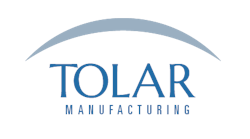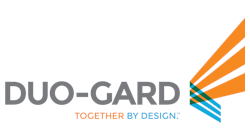Best Practices: Enhancing Shelter and Stop Amenities for Riders
North Little Rock, Ark.
Jarod Varner
Executive Director
Rock Region Metro
Making public transit more appealing to current and potential riders is one of our top areas of focus.
Rock Region Metro has taken major steps in the last several months to improve our passengers’ transit experience. Following an agency rebranding kickoff event last August, we implemented the first phase of our new GPS-based intelligent transportation system, starting with our 1,600 bus stop signs throughout Pulaski County. The stop signs feature unique stop ID numbers; riders waiting on a bus can text their stop ID to the system number and receive a text with detailed information on their bus arrival time.
The second phase of the ITS implementation took place in late January and early February, with the debut of a new website, rrmetro.org, that features live bus-tracking maps, and a related, fully responsive mobile website.
The website launch was followed by the launch of the METROtrack mobile app, which also offers real-time arrival information. Riders can use the app to mark favorite stops and routes, set reminders, get alerts, plan trips and access general information.
The agency recently debuted 15 new CNG buses and is on track with a plan to replace our entire fleet with CNG buses by the end of 2025. The buses, which feature the new brand’s gray, green and blue colors, have been well-received by central Arkansans and were made possible by a partnership with the Arkansas Energy Office, Southwestern Energy and local municipalities. Upon the CNG bus launch, free Wi-Fi services were placed on every bus in the fleet so riders can make the most of their commutes.
Over the spring months, Rock Region Metro will be installing 55 new shelters throughout our system, increasing agency-owned shelters by 55 percent. Through a $360,000 TAP grant, the agency’s first-ever TAP grant award, 25 of the new shelters will feature solar-powered lighting and bike racks.
Making public transit more appealing to current and potential riders is one of our top areas of focus. We are excited to offer our riders more convenience, value and comfort and are already researching ways we can make even more improvements beyond these projects.
Canton, Mich.
Kevin Chown
Outdoor Structure Sales Manager
Duo-Gard Industries Inc.
Riders want to be proud of the structures that populate their community.
Since Duo-Gard began building transit shelters in 1993, our focus has been on rider security, comfort and accommodation. During those 23 years our innovation has been continuous. This means we take a custom approach to create structures that integrate the best in style, materials and amenities that invite riders into the transit experience.
Safety and Security: We’re adding more closed-circuit cameras, tying them into dispatch to keep a closer eye on rider activity. We provide solar LED lighting systems, which have become more environmentally friendly and lower in cost. Besides helping riders feel more secure, these systems are designed and engineered to complement the overall architectural aesthetic of the structure. Often, riders can now push a button to alert an approaching driver that someone is waiting.
Comfort: We’re incorporating more and better heating avenues, stepping up from the old twist timers. Air conditioning, common in Europe, is becoming a requested feature for some shelters in the United States.
Aesthetics: Contemporary. Traditional. Totally far out and striking. Riders want to be proud of the structures that populate their community. Architectural aesthetics play a critical role. More than ever, we’re involved in the design phase so we can make recommendations that help create a signature structure that’s inviting as well as functional.
Branding: A major aspect of Duo-Gard’s transit enhancements involves the addition of branding elements. Whether it’s a city’s logo, a community’s slogan or a region’s special symbol, riders appreciate a visually distinctive way of seeing their environment presented. Customers are requesting more branding as a way of setting their transit systems apart. Fritted glass, special coatings and custom-designed plaques are among our offerings.
Seating: As more riders become environmentally conscious, recycled materials become more important. We evaluate and integrate upscale materials in resins and woods.
Wayfinding: We’re making bigger and better signage elements, including more information and more backlighting for visual impact. Separate illuminated pylons now complement a structure.
Bicycle Accommodation and BRT: With the emergence of bus rapid transit (BRT) systems, accommodation for bikes has become more important, making that first/last-mile convenience more critical.
Commuters are demanding safe, secure bike parking and storage, right along with their mass transit. Duo-Gard has added new shelter systems for both exterior and interior applications, bike racks, bike rooms and lockers for bus and train stations. Our biking line now includes more than 250 products, and our systems were named a 2016 Top 10 Green Building Product by BuildingGreen.
Beaverton, Ore.
Jeff Peters
President
Urban Solar
A rider will feel an inherent sense of safety and security, which comes when a person knows they can be seen, as well as clearly see what is going on around them.
Enhancing transit stop amenities is a proven way to increase ridership as well as public perception. The first thought for most agencies looking to enhance transit stop amenities is to replace shelters, benches or add real-time signage. Often the most overlooked amenity improvement is lighting.
The value of lighting in public spaces — including at bus stops and shelters — has long been understood and well documented. A rider will feel an inherent sense of safety and security, which comes when a person knows they can be seen, as well as clearly see what is going on around them. Often these benefits are viewed only as a means of crime deterrent, but the value of increased ridership and improved public image should not be forgotten.
To have every stop and shelter within a transit operation illuminated would be a dream for most agencies. Unfortunately, the reality of offering something as basic as light at a bus stop often comes at a great cost, both financially and in terms of time and effort.
Until recently, the only means to providing illumination at a transit stop required trenching of electricity involving permits, construction efforts and sidewalk or roadway disruption. In most cases, these efforts and expenses were saved only for new shelter installations.
Since 2008 Urban Solar has been designing and manufacturing solar-powered lighting solutions for transit. With UL safety-certified systems illuminating both stops and shelters around the country, Urban Solar is recognized throughout the transit industry for reliable, safe and high-performing products. Proudly manufactured in Beaverton, Oregon, our Buy America-compliant products are able to be procured through a number of FTA, security, state and local funding programs.
Urban Solar offers multiple product options. Our PV-Shelter series is designed to integrate with the architecture of your transit shelters, providing security and/or advertising illumination. Our pole mount PV-Stop series is designed to mount to your existing flag poles and provide automatic, or on-demand security lighting, along with options for dusk-to-dawn illumination for stop recognition or bus driver signal notification. These systems can be customized with agencies decals and powder-coated to match your agencies colors.
By understanding the value of lighting at bus stops and shelters, as well as the time, effort and cost necessary to hard wire electricity to a location, Urban Solar is able to offer solutions which are not only environmentally friendly, but high performing and low maintenance.
Advances in solar and LED technology have opened the opportunities to add high-output illumination to stops and shelters without the hassle of trenching. Through experience, custom design by location and continued product development, Urban Solar is able to offer the most reliable, highest performing and safest solar lighting products on the market.
Corona, Calif.
Patrick Merrick
Executive Vice-President
Tolar Manufacturing Company Inc.
Thoughtful and strategic design can transform bland community bus stops that have no relation to their surroundings into welcome fixtures that grow ridership and signal to transit riders, pedestrians and non-riders alike, that they are an integral part of their community.
In recent years, transit agencies and municipalities began to recognize that in addition to providing protection to passengers waiting for their ride, transit shelters can be used as branding opportunities promoting the agency to riders and non-riders alike.
Taking direction from our clients in this effort, Tolar Manufacturing developed a diverse transit shelter portfolio as we work with agencies to develop a distinctive look for their customers and potential customers.
Examples include working in concert with our clients to develop branding components in the shelter walls with baked frit or laminated glass, decorative perforated aluminum and route-specific branding.
Custom material shapes are playing more of a roll. Tolar Manufacturing has more than 100 custom extrusions that were developed based on client input. Our approach also includes a consideration to ease of maintenance at the stops when designing shelters and related amenities.
Technology plays a big part in what riders have asked for at stops and while static maps and timetables are still important, we also provide agencies with options such as digital information screens, real-time signage, cameras, wireless capabilities and charging stations.
Improved solar technology has also allowed Tolar Manufacturing to power many of these elements with power drawn from the sun, as well as traditional LED illumination. Huge steps have been made in photovoltaic-powered controllers, or solar energy management systems, with data loggers to help monitor historical power draw and anticipate or diagnose any potential performance issues.
Research completed by the Project for Public Spaces (www.pps.org) concludes that while transit agencies focus on shelters that have low maintenance costs and are resistant to vandalism, riders increasingly want a safe, clean space with good visibility, easy access to the bus, and clear and accurate transit information.
A well-lit, well-designed transit bus shelter, featuring ample seating, prominent route information, useful accessories and design elements that reflect the community, helps create a true sense of place and even ownership for riders.
Thoughtful and strategic design can transform bland community bus stops that have no relation to their surroundings into welcome fixtures that not only help to attract and grow transit ridership, but signal to transit riders, pedestrians and non-riders alike, that they are an integral part of their community.
Validating that an investment in transit amenities by agencies will grow ridership, TriMet conducted a study showing that over a 6-year period of 24 shelters installed, 22 showed higher average ridership after installation of the amenity than before. On average there were 19 more boardings at a stop after the shelter was installed, a 52 percent average increase.
We recognize that many transit riders start their day in a transit shelter before they board the bus to work, school or wherever they are headed. They deserve to spend that time in a comfortable, welcoming space that reflects their community and gives them a sense of ownership. The reports cited above mirror the focus that our team places daily on providing inviting, well-lit, and distinctive passenger amenity solutions to the communities we are fortunate enough to serve.





